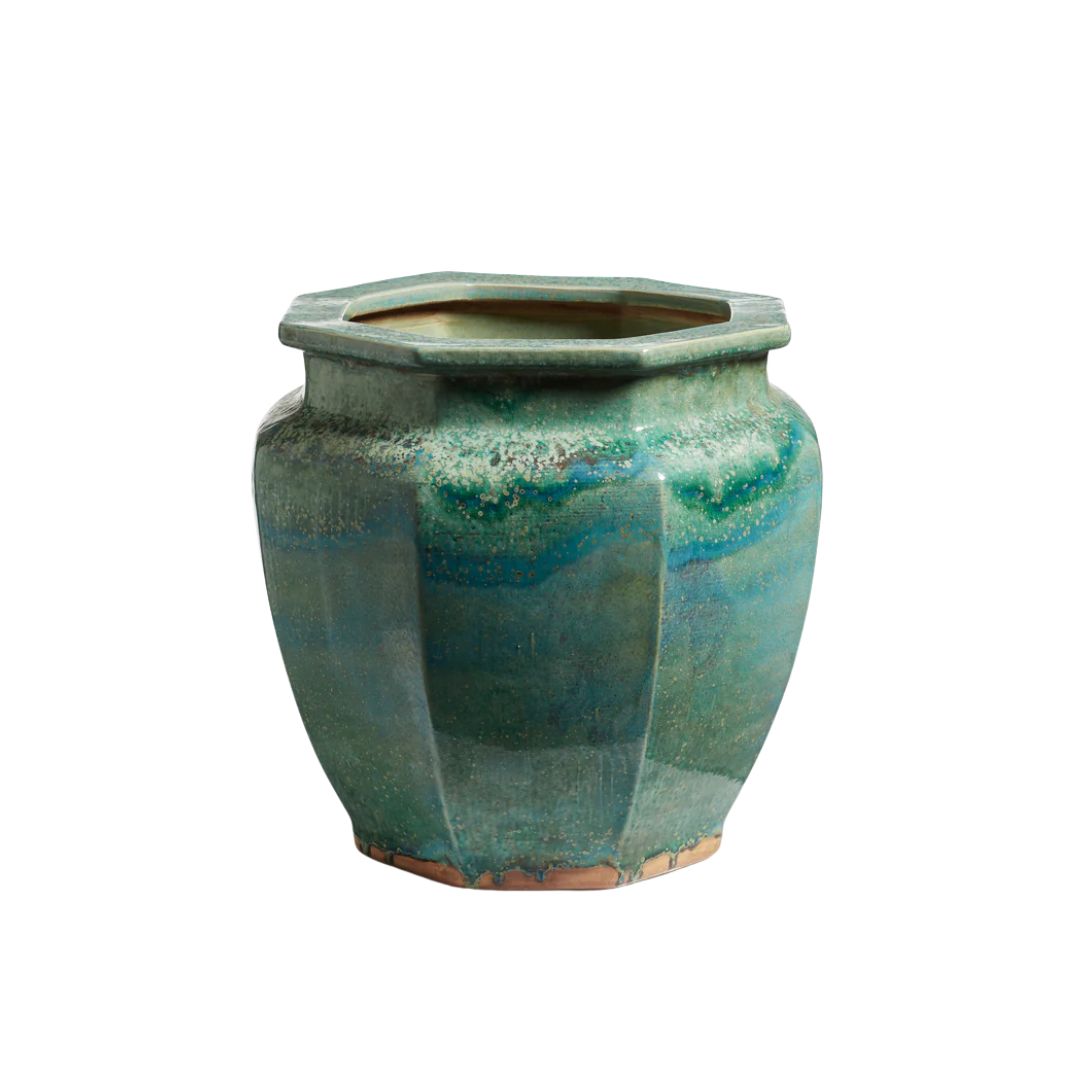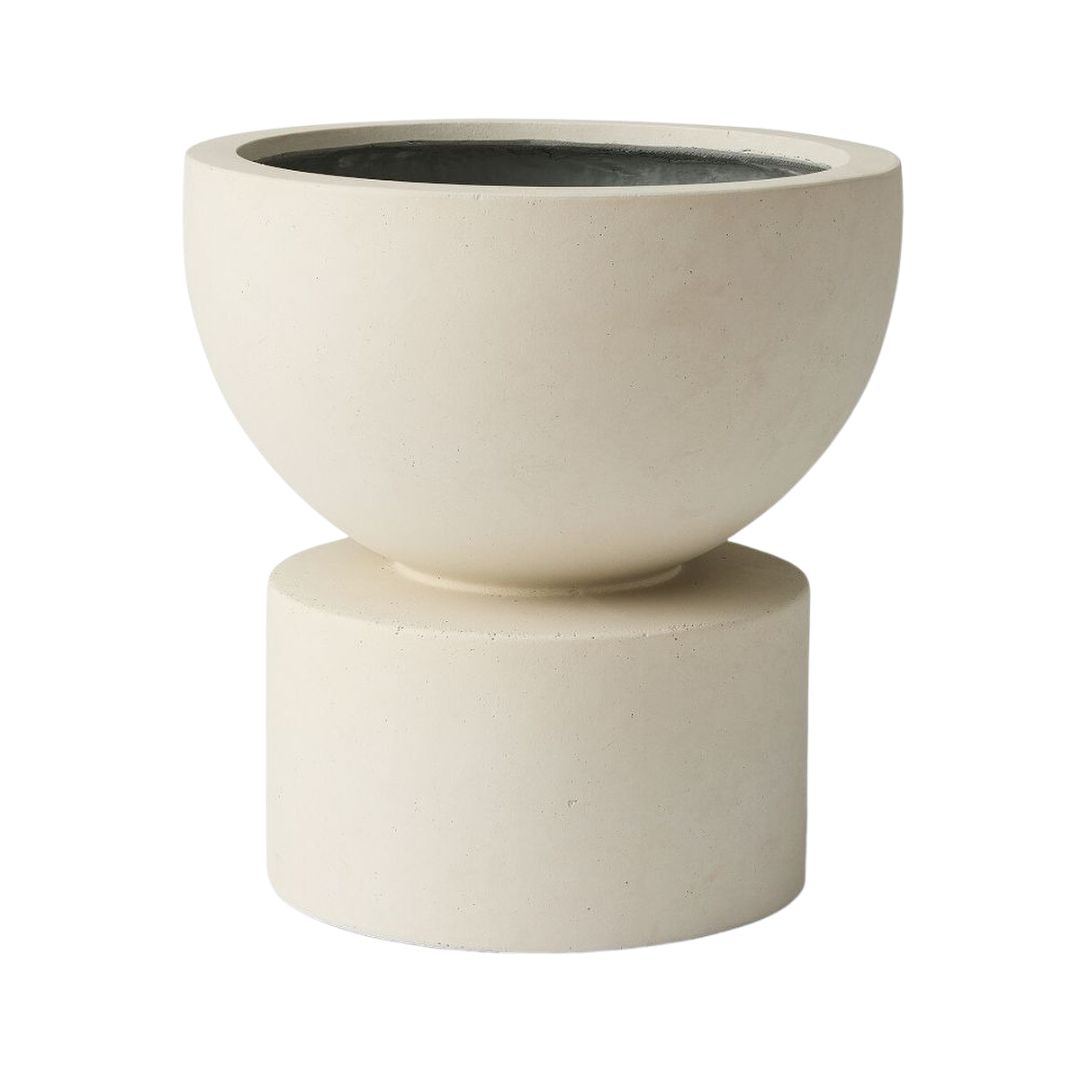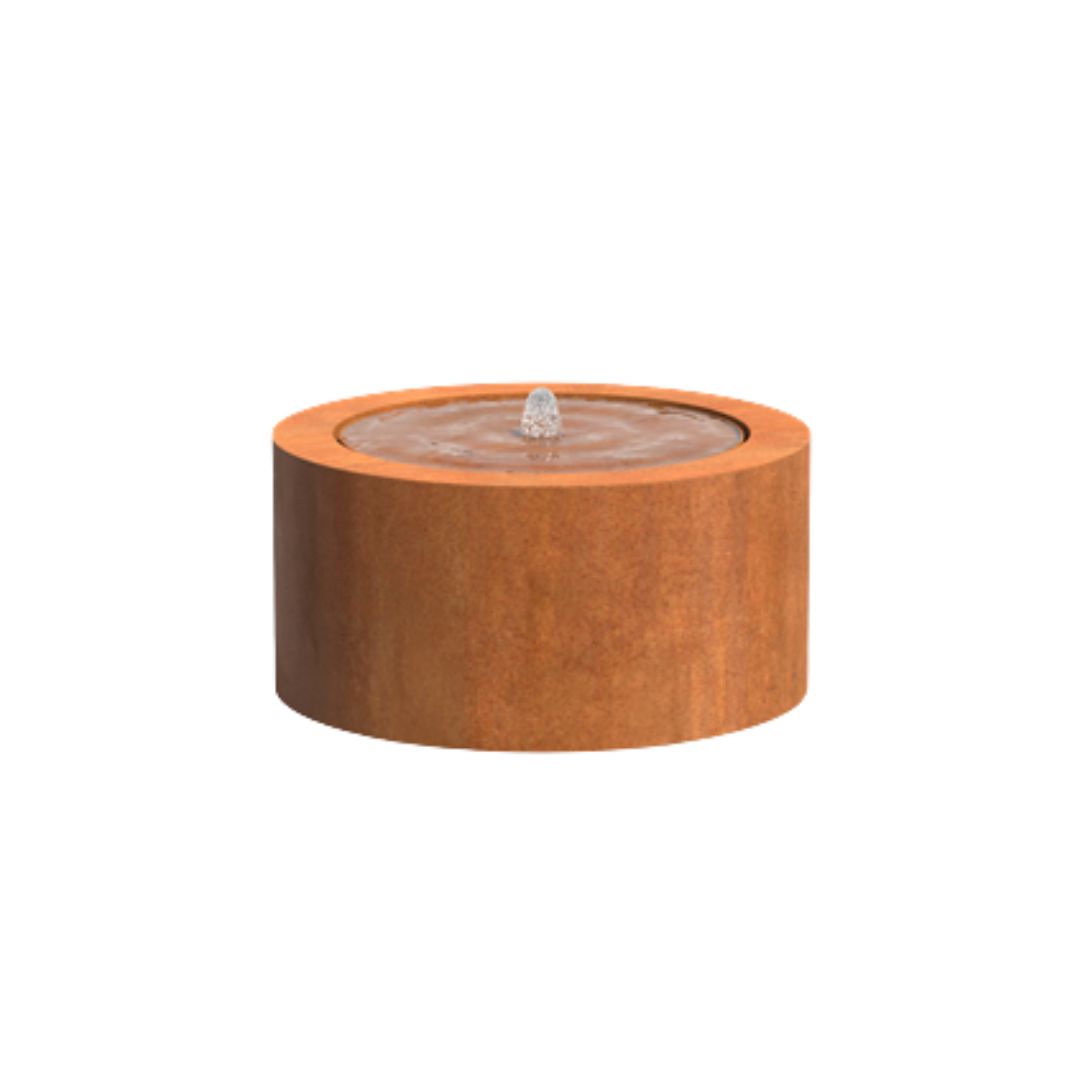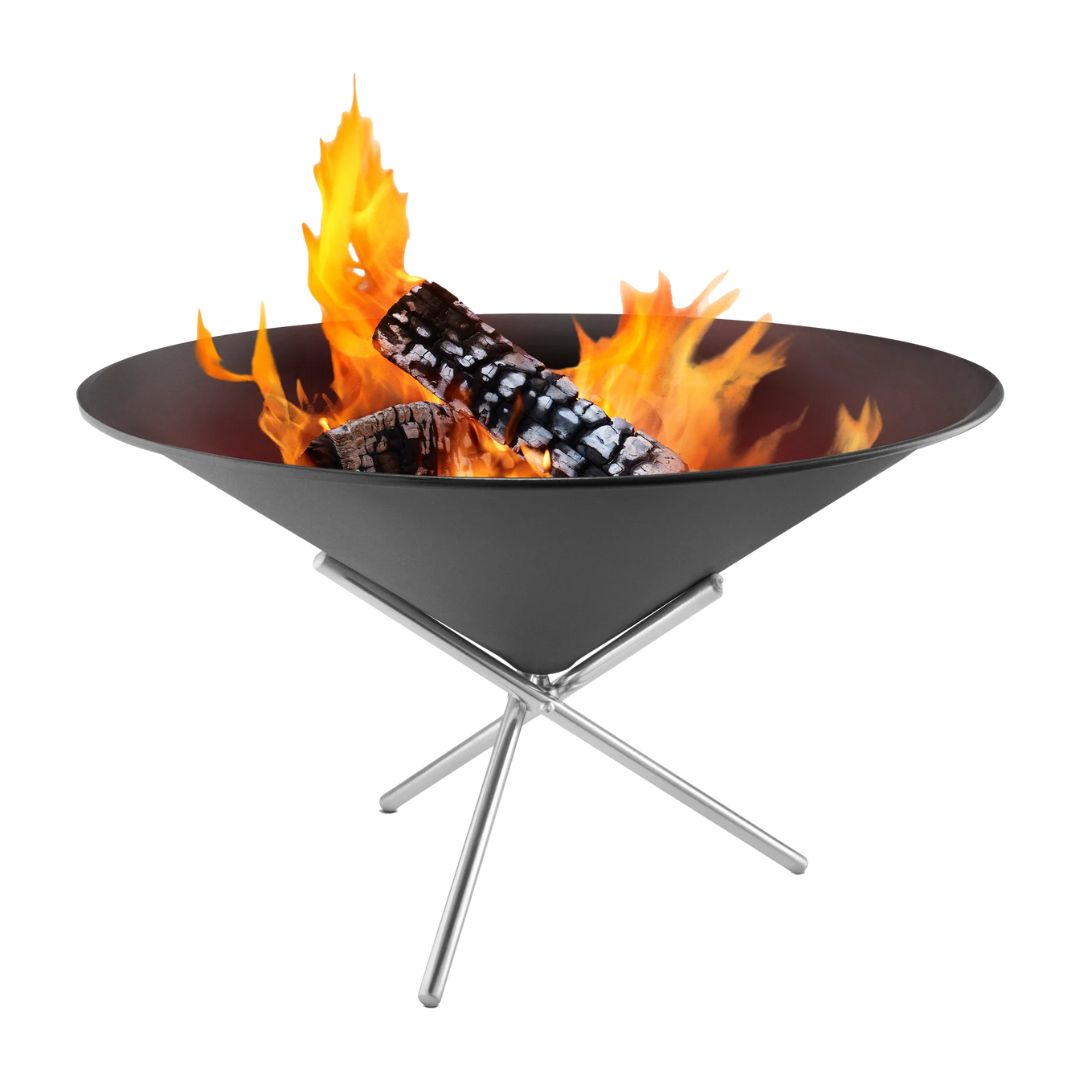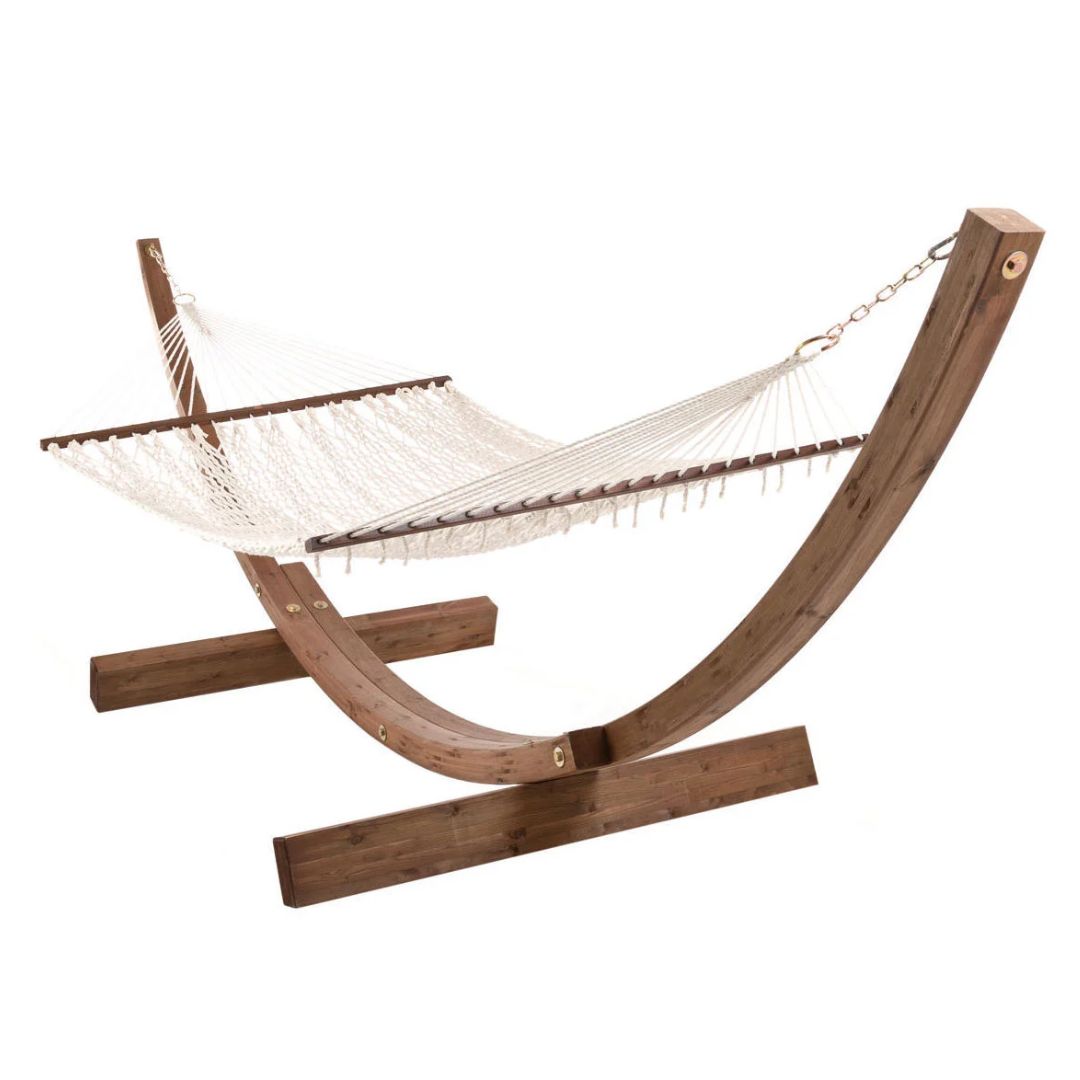7 Garden Corner Ideas and What You Should Be Doing to Make Use of These Awkward Spots
A square outside space needn't be boring; remodel right angles with these inspiring ideas from garden designers

Most modern homes, if they have outside space at all, have a compact square or rectangular plot. Yet this doesn't have to be boring. Landscape designers have plenty of garden corner ideas to make the best use of these awkward spots and bring beauty and balance to your yard.
Traditionally, a garden with four right angles has led to a small lawn, surrounded by skinny flower beds. Yet modern garden ideas include a wider range of interesting options for corner spaces. However, before deciding on the aesthetics, consider the practicalities.
Is your garden overlooked? Would you like a space to entertain or relax? Is the corner shady or sunny? With these questions answered, you are better placed to work out which of these gorgeous garden corner ideas are most suitable for your outdoor space.
1. Add Privacy With a Specimen Tree
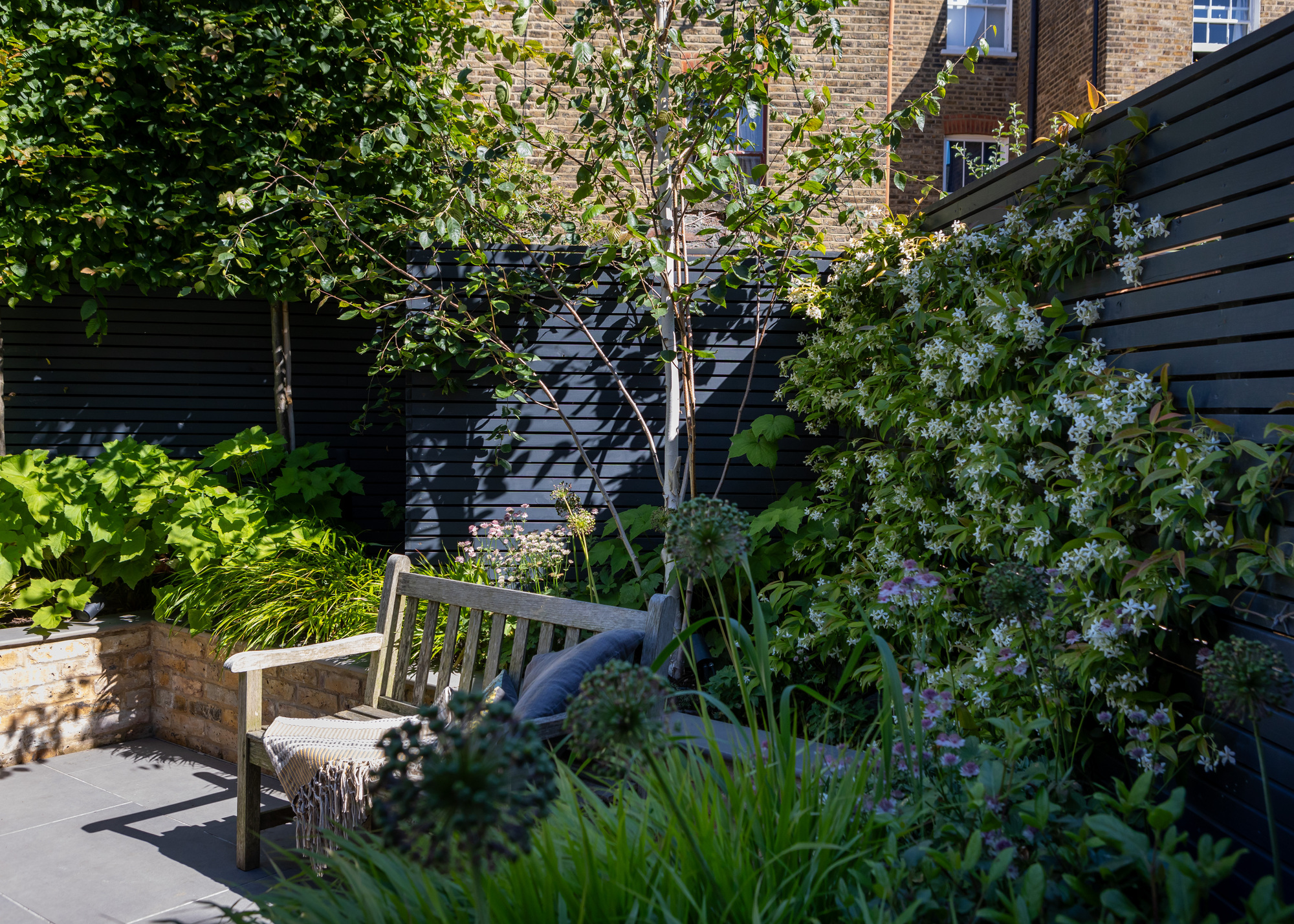
If you want to make an urban garden more private, using an overlooked corner to plant a beautiful specimen tree or sapling is a natural and attractive way to block a view. Ensure your chosen tree has ample space to grow, and that the roots won't disturb any nearby structures, and in time, it will reward you with a glorious natural canopy.
"Planting a specimen tree such as a Betula utilis jacquemontii in a corner creates privacy from overlooked neighbours, as well as an interesting view from the house," says Sarah Kay, founder, Sarah Kay Garden Design. "In one of our projects, we positioned an existing bench in front of the tree, to create a place to relax in the sunniest part of the garden, with an evergreen jasmine climber (Trachelospernum jasminoides) trained over the fence to provide additional fragrance and foliage."

Sarah Kay is an award-winning East London-based garden designer with over 12 years’ experience of transforming awkward or neglected spaces into beautiful gardens. With garden design qualifications from the renowned Capel Manor college and a pre-registered member of the Society of Garden Designers, Sarah brings a wealth of qualified experience and passion to creating bespoke, stylish but practical, wildlife-friendly gardens.
2. Arrange Potted Plants for a Shaded Seating Area
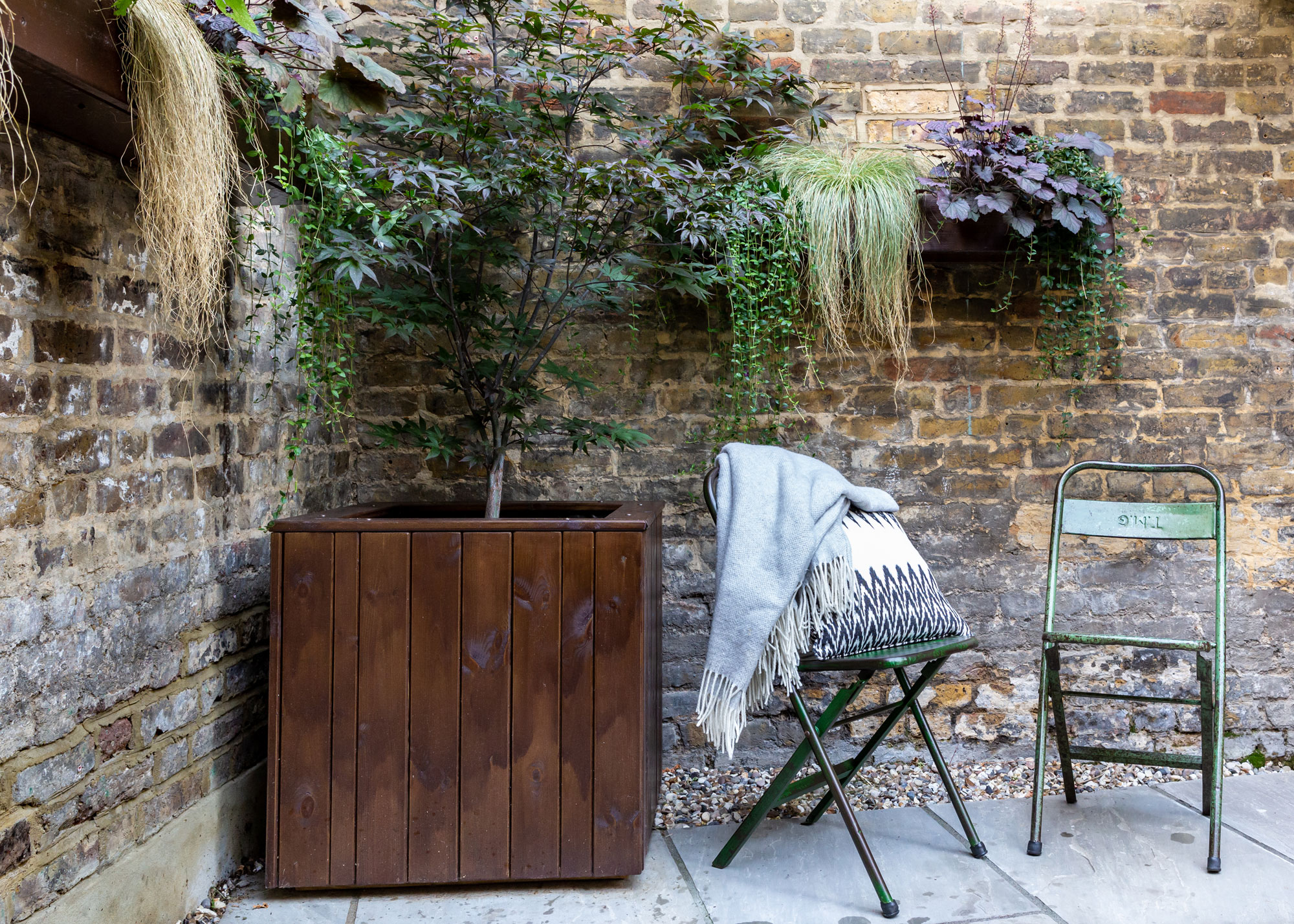
In a small courtyard garden, a corner can be a convenient spot for a seating area, but in the height of summer, it can get pretty hot, especially if it catches the sun. Trees and plants cool the atmosphere, as the color green absorbs infrared light. By including a selection of potted or hanging plants in a courtyard, it will add some shade, lower the temperature, and lead to a more comfortable space.
"In a corner of a tiny east London courtyard garden, I've created an appealing shaded seating area for reading, surrounded by plants," says Sarah. "To do something similar, use a feature architectural tree, such as an Acer in a large planter. I've added matching wooden wall planters containing trailing plants to soften the large expanse of brick wall on either side."
The Livingetc newsletters are your inside source for what’s shaping interiors now - and what’s next. Discover trend forecasts, smart style ideas, and curated shopping inspiration that brings design to life. Subscribe today and stay ahead of the curve.

Gina Taylor is the founder and lead designer of East London Garden Design, a studio specialising in contemporary urban gardens, courtyards, and rooftops. Based in East London, Gina is passionate about creating outdoor spaces that feel like a true extension of the home — places that are welcoming, personal, and connected to their surroundings.
3. Create a Wildlife Haven
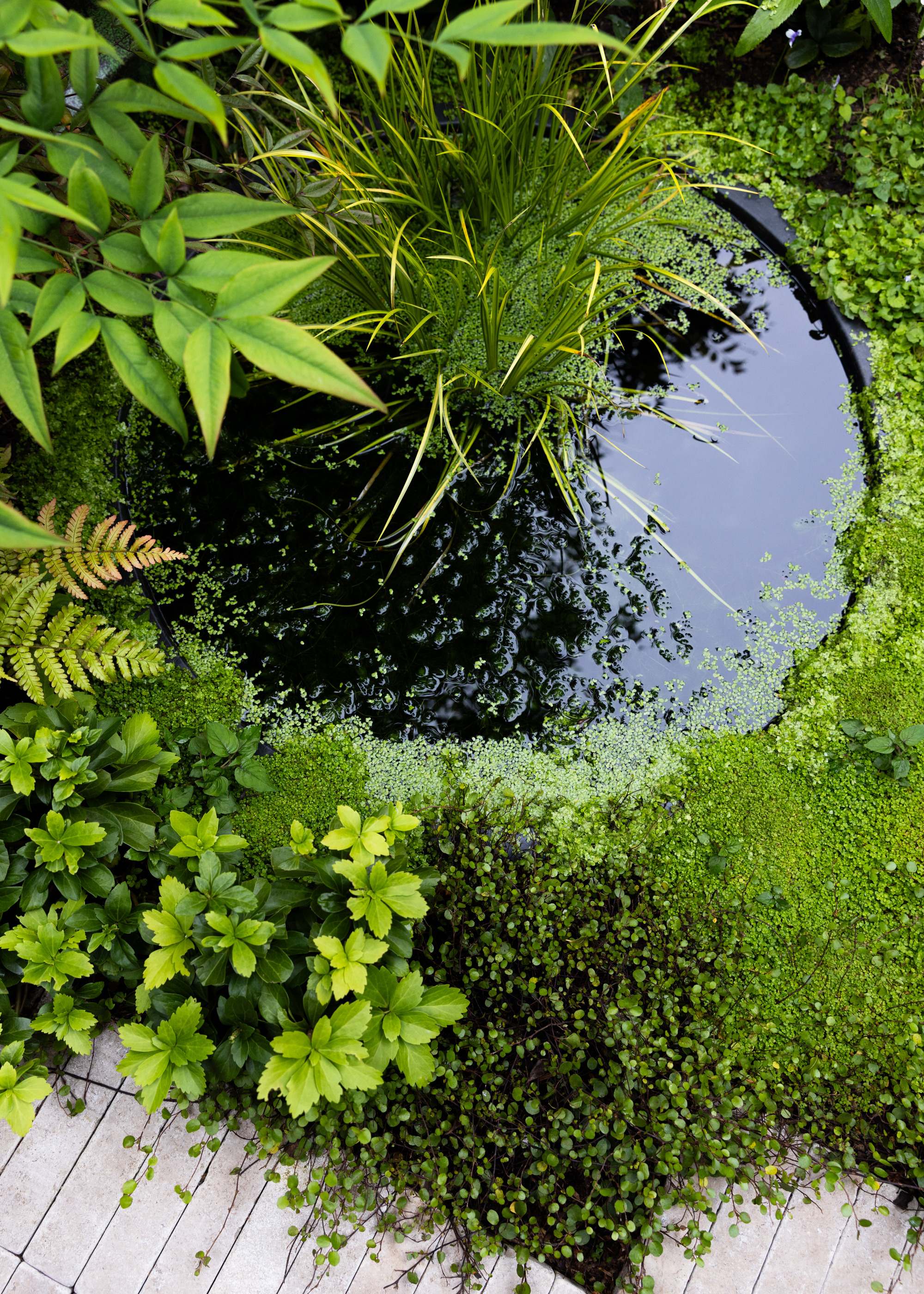
We're all aware by now that nature is good for our well-being. In return, nature needs our support, so wildlife gardening is huge. If it's not possible to turn your whole garden into a wildlife haven, transforming a corner is a great place to start. Firstly, choose the best plants for wildlife, as these will attract butterflies and songbirds to feed on pollen, nectar, and beneficial bugs. Water is important too, whether a pond, a pool, or just a bird bath or butterfly puddler.
"Corners are great for carving out a mini pollinator or wildlife zone," says garden designer, Gina Taylor, founder of East London Garden Design. "A mix of flowering plants, a small bug hotel, and a shallow reflective water pool can do wonders. The water feature serves a dual purpose — giving birds and insects a place to drink or bathe, while also adding a serene, light-catching element to the space.
"Even a low, dark-glazed bowl placed at soil level can create that mirror-like quality, especially when it reflects nearby plants or the sky. It becomes a quiet, calming focal point — and it’s amazing how quickly wildlife will start to appear," Gina adds.
Laura Janney, CEO, The Inspired Garden Masterclass, agrees that a garden corner is the perfect plant for a miniature wildlife habitat. She tells me, "I love including things such as bird baths, bird feeders, and/or a butterfly house, as well as pollinator-friendly plants, such as coneflower, coreopsis, yarrow, and agastache."
For attracting beneficial garden insects to a garden corner, "plant layers of echinacea, monarda, and salvia if it's sunny, or try goat's beard, astilbe, and heuchera, if it's shady," says Kat Aul Cervoni, landscape gardener and founder of Staghorn Living. "Add a bee hotel or decorative log pile for extra habitat and structure.
"A small bubbling urn or basin brings sound, movement, and a sense of calm. Surround it with soft foliage like hakonechloa, hosta, or low ornamental grasses. And add stepping stones to guide the eye and make it feel like a destination."

Landscape designer, Katherine "Kat" Aul Cervoni is the founder and principal of Staghorn Living. Kat creates outdoor spaces that become natural extensions of a home’s interior. A member of the Ecological Landscape Alliance and the Association of Professional Landscape Designers, she also mentors young plant enthusiasts and upcoming designers.
4. Tuck in a Firepit
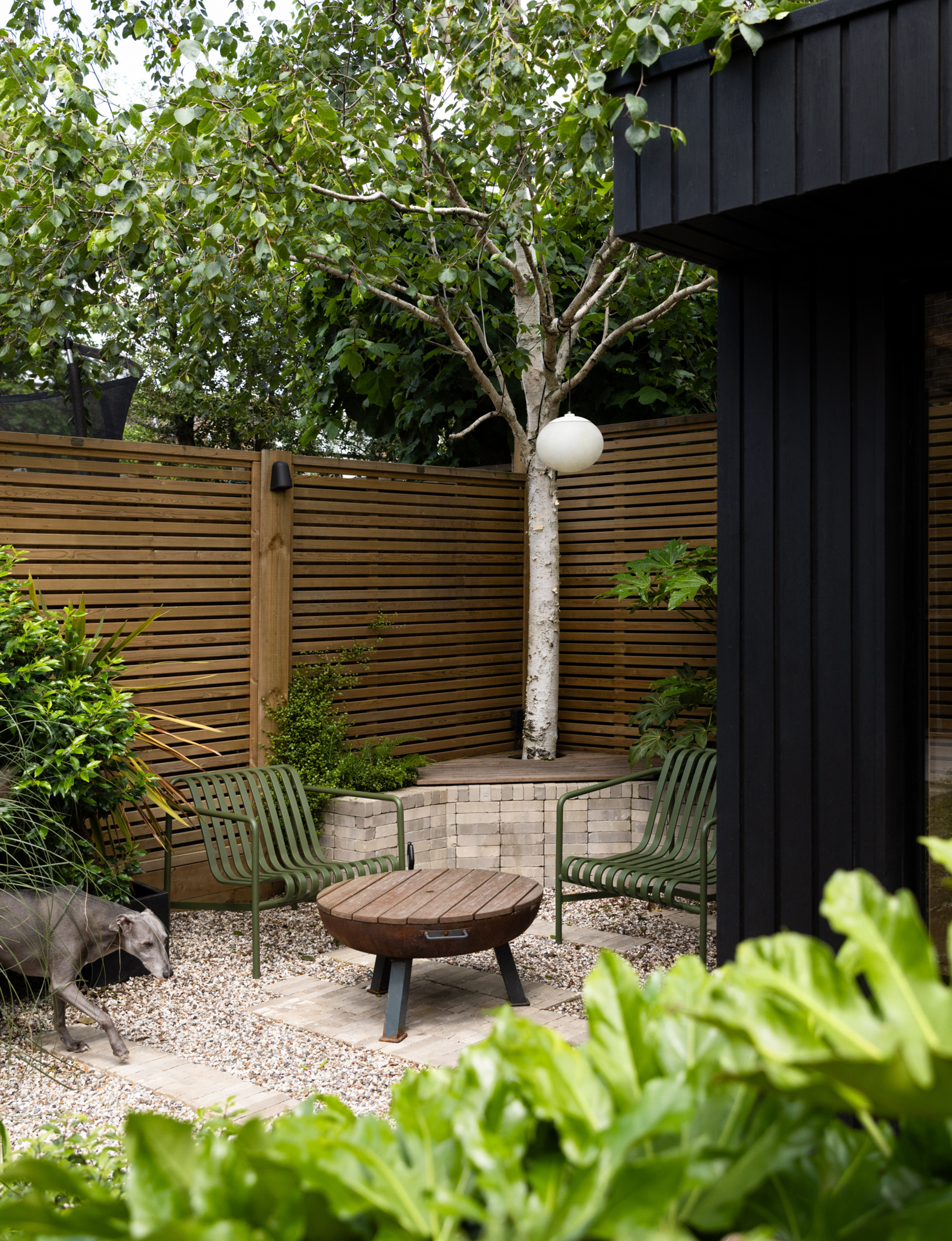
The plethora of firepit ideas on offer can't have escaped your notice. And while a patio is a favored spot for a firepit, a corner at the end of a small garden is popular too. A cosy garden corner was the chosen location for a firepit in one of the garden designer, Gina Taylor's, recent projects.
"One of the most requested features from clients lately is a compact seating area centred around a fire pit," says Gina. "Even in a tight garden, a portable fire bowl with a couple of well-placed chairs or a built-in bench can create a really atmospheric evening spot.
"It doesn’t take up much room, but it quickly becomes a favourite place to relax or entertain. And since wood-burning is restricted in London and some other cities, there are plenty of smokeless options available now — from gas to bioethanol burners — so you can still get that cosy glow without the smoke or hassle."
If you're unsure whether a wood vs gas firepit is best for you, first check whether there are any restrictions in your area, as it is illegal to burn wood in some zones due to smoke emissions or fire hazards. Also, be sure to site firepits well away from timber fences, wooden decks, or anything else that's flammable.
5. Liven it Up With Vertical Planting
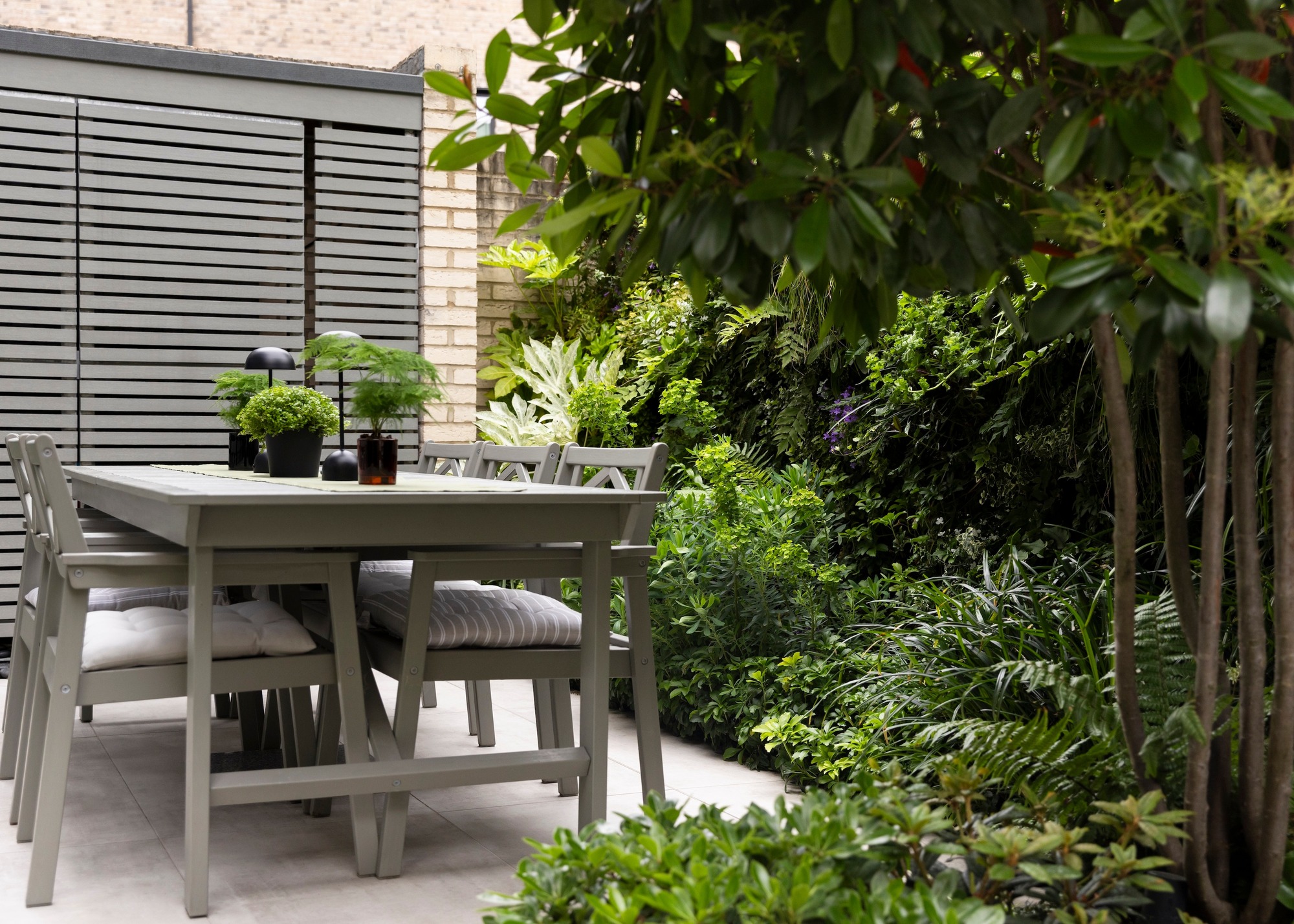
Small gardens, especially in cities, can look a little flat. This is usually due to space constraints and the absence of trees and tall plants, coupled with an excess of hardscaping materials and outdoor furniture. Vertical planting is a wonderful way to remedy this situation and enliven a corner used for dining with flourishing foliage — or to create one.
"One of the simplest ways to transform a garden corner is by using height — a trellis or green wall can soften boundaries and create a lush, layered backdrop," says Gina. "Climbers like Trachelospermum jasminoides (star jasmine), clematis, or even edible vines like grape or passionfruit can add colour, scent, and structure.
"I often tuck a small bench beneath, or if space allows, incorporate a seating or dining area to help draw people into that space and make it feel purposeful."
6. Introduce a Retreat Zone
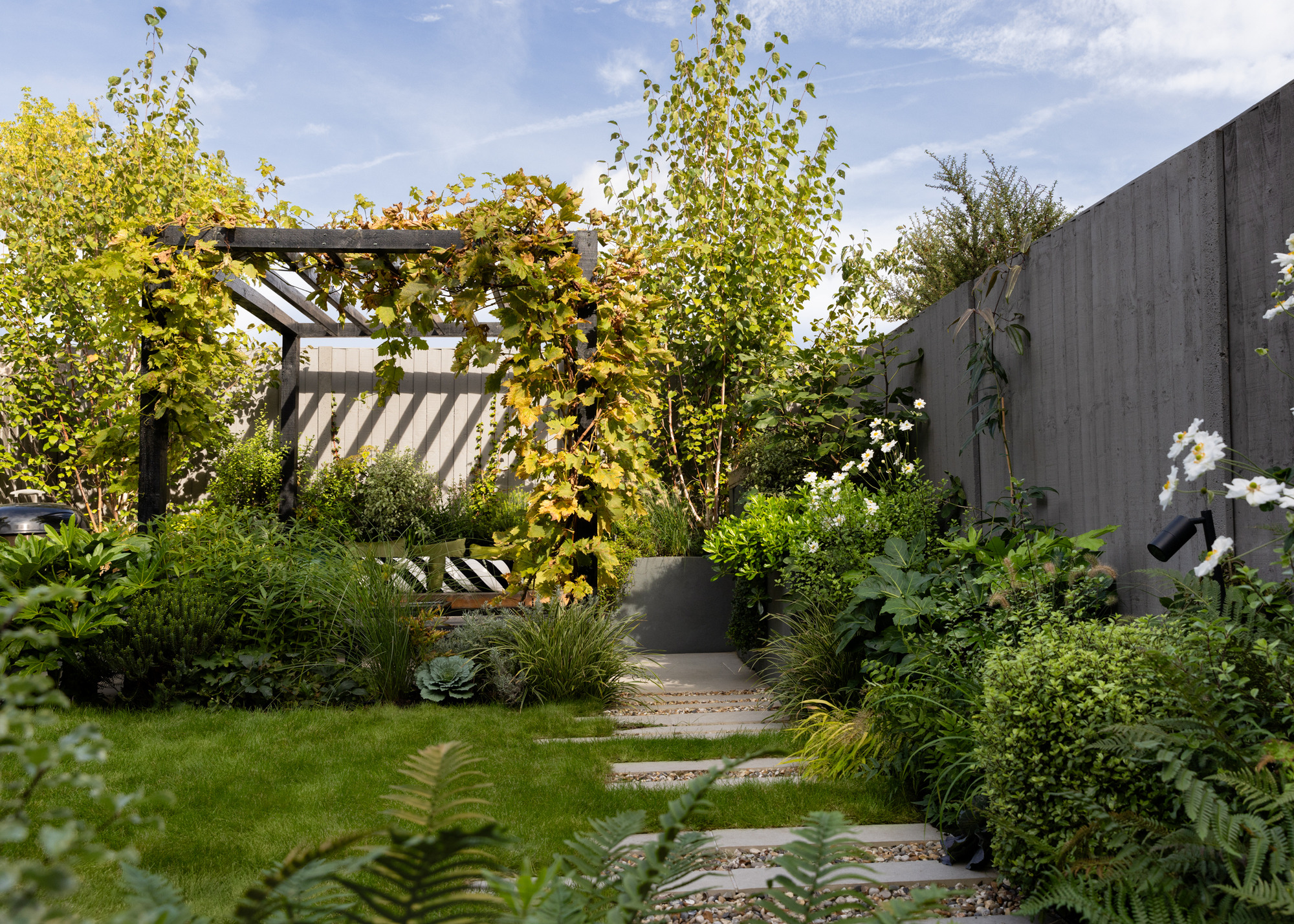
A garden hideaway can be tucked into a far corner, turning it into a quiet space to retreat to. A shady spot or a corner with dappled light is ideal. However, a sun trap could be made cooler and more comfortable with the addition of a pergola, if you have enough room. Make it relaxing with comfy seating to lounge on and fragrant plants nearby.
"Another popular request is to create a peaceful little retreat space," says Gina. "A slim bench, hanging chair or hammock, layered with cushions and throws, surrounded by soft planting like ornamental grasses, ferns or scented herbs, can turn a corner into a personal hideaway.
"Add a side table and a solar lantern or festoon lights overhead, and it becomes a lovely place for a book or a quiet moment with a morning coffee. It’s more about creating atmosphere than taking up space — and it can shift how a small garden feels."
"A meditation corner in a garden is a lovely idea," says Laura. "Especially if you're surrounded by all of your favorite flowers and foliage. I like to use soft, tranquil plants, for example, ferns and other shade plants like astilbe, brunnera, and coral bells."
7. Hide Practical Items
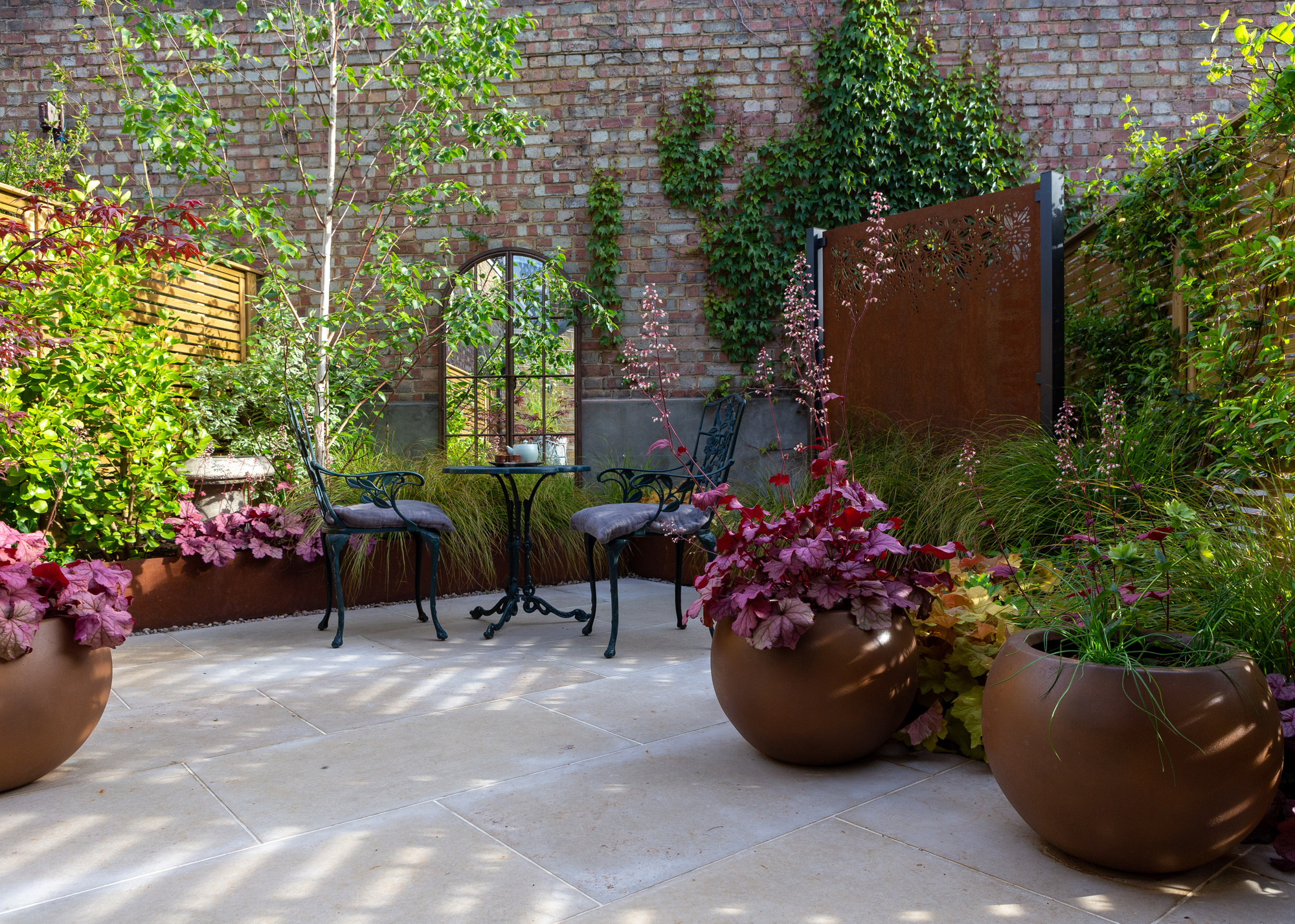
In a small garden, a corner can be a functional storage area, which you may want to disguise. One way to do this is with an eye-catching garden screen, which looks like a feature artwork, but has a helpful purpose, such as hiding bins or other unattractive practical elements.
"In small gardens, which are completely on view from the house, a corner is a great spot to hide practical items such as compost bins and sheds," says Sarah. "We created an urban sanctuary garden, using a decorative Corten steel screen to disguise a small area where the compost bin is housed. The material and colour links visually with other elements within the garden, creating a cohesive look."
FAQs
How to Brighten a Dark Corner of the Garden?
Firstly, check what is causing the darkness or shade. If it's coming from overgrown trees and plants in your garden, cut them back. If they are on your neighbor's side, ask them to cut the overgrowth back.
Suppose the dark corner is due to surrounding buildings. In that case, it can be brightened up with outdoor furniture in bold colors, such as the red powder-coated aluminum bench in the project by Gina Taylor at East London Garden Design at the top of the page. A natural way to do it would be with bright flowering plants or those with colorful foliage that can thrive in low light, such as coleus, impatiens or hostas, and a water feature, which will reflect whatever light there is.
"Using foliage that reflects light is a lovely way to brighten a dark corner," says Kat Aul Cervoni, landscape designer and founder of Staghorn Living. "Variegated or silvery foliage like Brunnera ‘Jack Frost’, Carex ‘Ice Dance’, or Lamium maculatum can lift the whole space. Mahonia ‘Soft Caress’ also adds evergreen texture and light-catching softness.
"You could also choose pale or light-colored blooms. White or pale flowers like hellebores, white astilbe, or Japanese anemones stand out beautifully in low light. A mirror, light-toned gravel, or pale glazed pots can bounce light around and visually open up the corner too."
Garden corners offer an opportunity to zone your outside space for specific purposes or activities. Before deciding what to do with them, think about how you would actually like to use your garden, as well as the orientation of each corner and where the sunlight falls at different times of the day.
It's entirely possible to blend some of the above ideas, too. Why not include a wildlife haven in a quiet retreat space? Or plant a mature tree for privacy in a corner used for outdoor dining or seating? Whatever you decide, choose plants and trees that are suitable for the conditions in your garden, as they will require minimal maintenance, leaving you more time to enjoy your outside space.
Jacky Parker is a freelance lifestyle journalist and writer, producing a wide range of features for magazines and digital platforms. She has written for Livingetc and its sister titles, Homes & Gardens and Country Homes & Interiors for more than 15 years, both as a freelance contributor and as Acting Digital Editor and Acting Style Content Editor, regularly reporting on the latest interiors, gardens and wellness inspiration, speaking to experts in their respective fields, and discovering the best tips.
Jacky has also written for other publications, including Sunday Times Style, The Telegraph, Architectural Digest, House Beautiful, ELLE Decoration, Red, Grand Designs and more.
